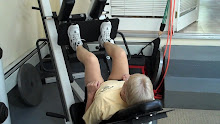Are you stalled with your weight loss? It could be for a number of reasons. Let’s look at one possible reason and see if you have this one covered. One of the most overlooked nutrients when trying to lose weight is fiber. Yes fiber. As simple as that sounds too many of us lack sufficient fiber in our diets. That’s a problem. If you were seriously looking to drop weight why wouldn’t you make sure you were meeting your daily requirements?
Why fiber? Well, what’s one of the toughest things we encounter when trying to lose weight? How about those nasty cravings? If we give in we fall off the wagon and sabotage our food plan. Maybe we had a severe craving for junk food. Did you have a plan in place to avoid disaster? Part of your overall plan should be to have that fiber during the day. People think fiber may simply aid in digestive health, but it also can help you lose weight because it helps you feel full longer and curbs cravings. Eating foods rich in fiber is, of course, the ideal way to get the fiber you need. But the reality is that most people -- especially women -- don't even come close to eating enough fiber.
Fiber Helps Us to Eat Healthy Foods
A fiber-rich diet is likely to be richer in nutrients than a low-fiber diet. This because fiber is found mainly in vegetables, fruits, whole grains, nuts and seeds - all very healthy foods and great for weight loss. By increasing our daily fiber intake, we are likely to improve our eating habits and our chances of losing weight.
Here's the facts on fiber.
There are two types of fiber: soluble and insoluble. Both types of fiber are undigested, and are not absorbed into the blood stream. Soluble fiber dissolves in water and forms a gel-like substance that traps sugars, fats and cholesterol. Insoluble fiber does not dissolve in water and passes through the digestive system largely intact. So how does fiber make you skinny (and healthy)?
-Soluble fiber binds with sugars, fats and cholesterol
-Soluble fiber slows digestion in the stomach, thus making you feel full longer
-Soluble fiber regulates blood sugar, thus making you less likely to crash and then crave junk
-Soluble fiber lowers cholesterol
-Insoluble fiber promotes regularity
-Insoluble fiber removes toxic waste through the colon in less time
-Insoluble fiber helps prevent colon cancer
Why then do we continue to neglect such an important food source? Don't know. 32 grams a day should be easy right? Look at the benefits, it's worth it.
So how are we going to do it, here's how. You have to eat more of the following: But for continued fat loss we have to watch some of the higher fat choices. Fruits and veggies are the best choices.
-Fresh fruits & veggies
-Dried fruit --but limit for fat loss
-Whole grains
-Nuts
-Flax seed
-Wheat germ
So how do you incorporate these things into your diet? Here’s how:
-Eat more veggies. Love eggs? Add spinach, mushrooms, onions or other veggies to your egg whites in the morning. Have a salad for lunch and not just lettuce. Add cucumber, tomatoes, walnuts, and/or cranberries.
-Add berries to your cereal (watch portion size) or low fat yogurt
-Add lettuce, tomato, and grilled peppers to your turkey burger
-Switch to whole grains, like brown rice instead of white, or whole wheat bread instead of white.
-Start your dinner with a salad
- Add Flaxseed to oatmeal or yogurt
So what does eating 32 grams of fiber every day look like?
-Breakfast: 1 package of plain instant oatmeal ( 3 g) with ½ cup of blueberries ( 2 g) = 5 g
-Snack: Apple ( 3 g) with 10-13 almonds ( 3.4 g) = 6.4 g
-Lunch: Salmon with broccoli (5 g) with ½ cup of brown rice (3 g) = 8 g
-Snack: Medium banana = 4 g
-Dinner: Salad: 2 cups of mixed greens (2 g) with ¼ cup artichoke hearts (2 g), 1 tablespoon of slivered almonds (1g) and 4 oz of grilled chicken = 5 g
-snack: ½ cup of raspberries = 4 g
TOTAL FIBER: 32.4 grams
Here are some things to think about as you increase your fiber intake:
• If your daily fiber intake is low (less than 10 grams), be sure to increase your fiber intake slowly, to minimize discomfort, such as gas or constipation. Don't try, for example, to begin doubling your fiber intake while you're away from home or on a vacation.
• Be sure to drink plenty of water (about 6-8 glasses a day, or until your urine is clear, unless your doctor has you on a fluid restriction) to help make sure the fiber passes through your body rather than just hanging around –sorry….
• Decrease your fiber intake if you notice you're having a lot of loose stools or diarrhea.
Yes it's not always easy getting it in everyday. It may seem like a lot at first but fruit and veggies are naturally low in calories. By choosing from a wide variety of these and switching from refined carbohydrates to whole grains, you will be well on your way to getting enough fiber. If it's tough for you, try a fiber supplement like Metamucil. There is a new Lemonade flavor that tastes good and delivers 3 grams of fiber per serving. Just mix with water.
Although fiber is not the cure all, a high-fiber diet - as part of a healthy, balanced, lower-calorie meal plan - can really help you reach your goals!
If you want more information on the benefits of fiber or how to get more of it into your diet go to www.nationalfibercouncil.org Request of the new free “Dine In, Dine Out” pocket guide to help you make better, high fiber food choices!
Saturday, June 26, 2010
Subscribe to:
Post Comments (Atom)




.jpg)




No comments:
Post a Comment